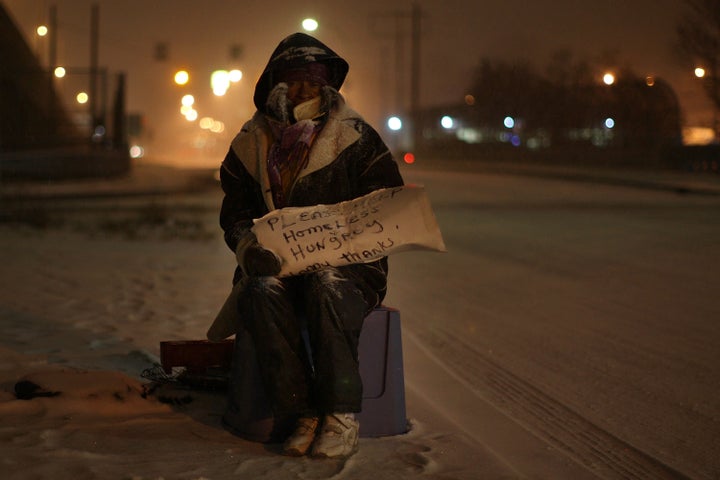
Last week, our friends at Social Security Works captured an impromptu and rather frank interview with Alan Simpson, co-chair of the National Commission on Fiscal Responsibility and Reform and former Senator of Wyoming. Of Simpson's statements, here's one of the most striking: "We're trying to take care of the lesser people in society...."
It is an appalling sentiment -- that any one person would have less value than another. Yet, I cannot help but wonder who are the "lesser people" Simpson was referring to? Was it his intention to refer to those less well-off? Perhaps Simpson meant those living in poverty? Or those living near poverty? As dreadful as it sounds, Simpson's comment offers an important learning opportunity for decision makers, including those members of the Fiscal Commission.
Put simply, there are far more Americans who are less well-off than we acknowledge. The federal poverty level, the underpinning of the majority of our nation's social programs and the benchmark by which we establish the country's poverty rates, is woefully outdated. A simple calculation of food costs times three is what determines who is counted as poor and who is not. And it is this measure or some derivative of it, that stands between accessing critical public supports or not.
Consider data that illustrates what it costs to retire and compare it to the federal poverty level. The Elder Economic Security Standard™ Index (Elder Index) captures the cost of basic needs in retirement, including housing, health care, transportation, food and miscellaneous essentials. On average, a single elder who rents needs a little over $20,200 each year, according to the Elder Index. The federal poverty measure is just $10,830 - almost half of what it really costs to live in retirement.
The measures that drive our policymaking -- at the federal, state and local levels -- fail to capture the true cost of living, and thus fail to capture the true number of those who cannot afford to meet basic needs. It is incumbent on the Fiscal Commission to consider how its decisions regarding the nation's debt will impact not only the 39.1 million living in what we call "poverty" -- but the millions more who remain uncounted.
On its face, Simpson's statement about the "lesser people" is distasteful, yet sheds light on an issue too often ignored. As the Fiscal Commission decides how to balance the nation's budget, whether through changes to Social Security or Medicare benefits or crucial discretionary programs, it should be sure to take care of the less well-off. And by less well-off I mean both the millions who live in poverty (as we measure it) and those millions who struggle day-to-day with neither acknowledgment nor assistance.